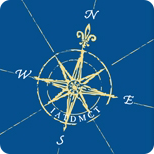| We’re a month behind in reporting on the most recent Compass, principally because Prof Christians’ Interview was too compelling to push back. The December issue completed the year’s circuit of meetings, where IATDMCT members were involved in Regional meetings and Scientific Committee initiatives, among other international meetings and congresses. Among the great reports from SCs, members of the Drugs of Abuse Committee bring our attention to medicinal use of Cannabis, and suggest our Association keep an eye on emerging developments.
Many thanks to the Compass Editorial Team:
Paula Schaiquevich
Edgar Spencer
Franck Saint-Marcoux
|
The December issue of the Compass saw the close of a very active year of scientific meetings. Aside from reporting about their participation, IATDMCT members organized Regional meetings and Scientific Committee symposia, actively promoting the value of what we do. The year’s close saw the following:
- IATDMCT Regional Meeting of the Asia & Pacific region, August 16-17 in Guangzhou, China
- Two symposia by Scientific Committees: Immunosuppressive Drugs Committee Symposium at the European Federation of Laboratory Medicine Congress, September 21-24 in Warsaw, Poland; and the Drugs of Abuse Committee Symposium at the Annual Meeting of the Canadian Association of Clinical Chemists, June in Alberta, Canada.
- Educational Workshop:The Population Pharmacokinetic Modelling and Dose Optimization of Antimicrobials: PMetrics/BestDose Workshop, October in Brisbane, Australia.
- Active participation of members at The International Association of Forensic Toxicologists (TIAFT) meeting, also in Brisbane, in September.
TIAFT an association with close links to our own, and many members are joint members. The Society of Hair Testing (SOHT), and the Forensic and Clinical Toxicology Association Inc. of Australasia (FACTA) also participated at this large gathering of toxicologists.
- Finally, Manuela Neuman participated in “The International Medical Cannabis Conference” September in Tel-Aviv, Israel, commenting on the gap in participation by professionals related to drug monitoring and toxicology at this large congress representing an emerging and important field.
In the context of their participation in the Symposium and International Conference related to Medical Cannabis, Manuela and colleagues prepared two fantastic reports on the topic. The District of Colorado is highlighted as an area where both medical and recreational use are legal, connecting nicely to last month’s interview where Uwe Christians refers to their work and its local impact. We hear about technologies from genetic manipulation of strains, to novel agricultural strategies such as advanced climate control systems and innovation in formulations. Finally, Manuela reports about emerging scientific work, principally observational, of the impact on viral hepatitis, where sometimes it is difficult to detangle the effects of alcohol when drugs are used concomitantly. Ex vivo data from their group suggest upregulation or activation of specific cannabinoid receptors may promote steatosis (via inflammation) or fibrosis, with some support from preliminary clinical data.
Colleagues from Brazil representing the Alternative Sampling Strategies Committee present a novel technique to investigate the impact of hematocrit in Dried Blood Spots, based on a portable plasma separation device. The Oncology Scientific Committee resume the current state of TDM in oncology, and project to complete two guidance documents: initially concerning 5-Flurouracil, in time for September’s congress in Kyoto, and subsequently Imatinib, to be presented at the 2018 congress in Brisbane. Finally, we hear about the role of LC-MS in the clinical lab, amongst various other methods used posterior to initial immunoassay screen. These are classified by liquid or gas chromatography separation methods, and targeted and untargeted screening methods. Various challenges of each method are discussed.
The content of the IATDMCT Blog does not necessarily have the endorsement of the Association.



